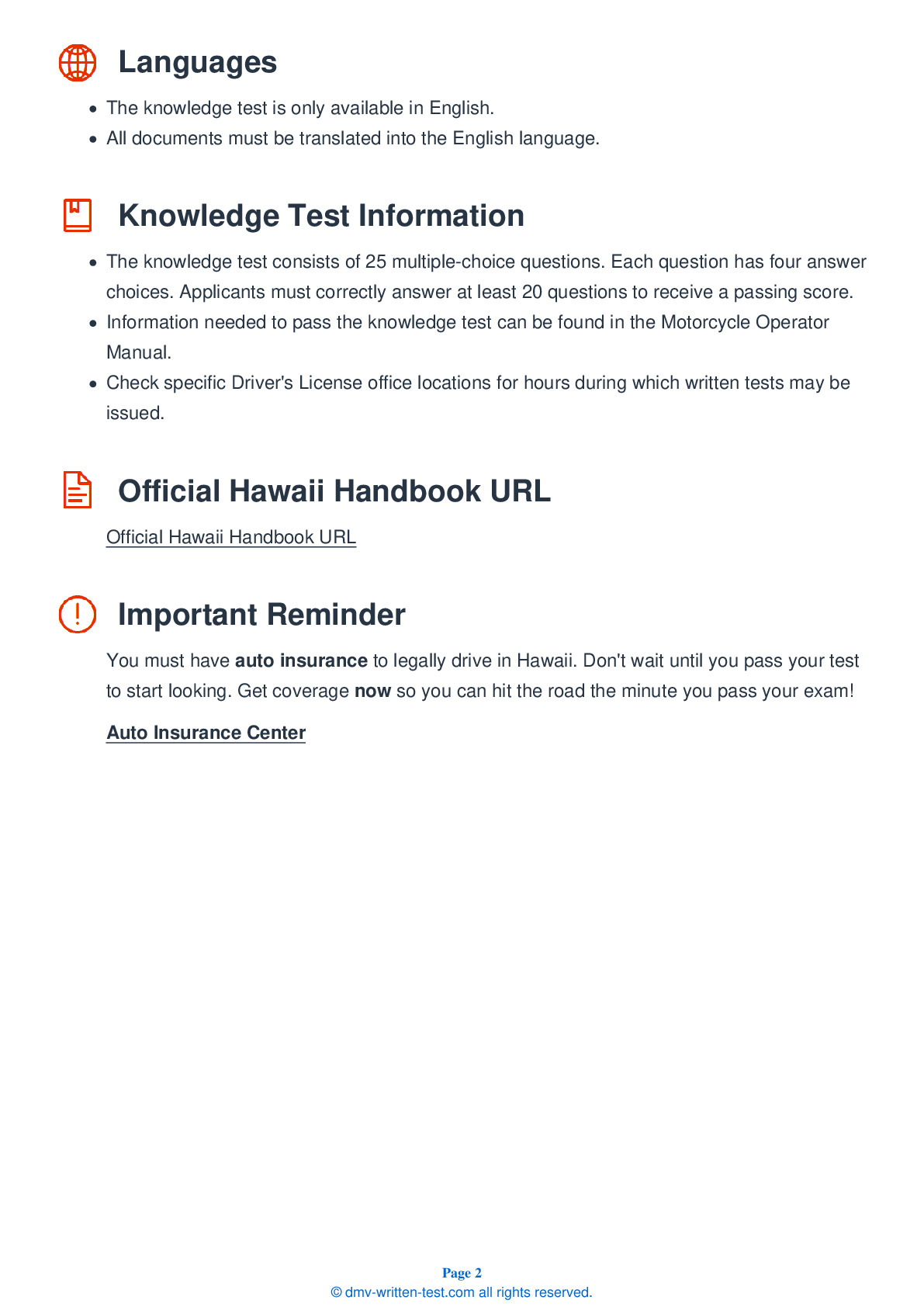2025 Hawaii Motorcycle Permit Test 6
The following questions are from real DMV written motorcycle permit tests. These are some of the actual permit questions you will face in Hawaii when getting your motorcycle learners permit. Each motorcycle theory practice test question has three answer choices. Select one answer for each question and select "grade this section." You can find this button at the bottom of the drivers license quiz. For a complete list of questions and answers for Hawaii please visit https://cheat-sheets.dmv-written-test.com/en/hawaii/motorcycle.
Number of Tests
Number of Question
Passing Score
19. When riding in curves, turning, or entering a highway, the best group formation is:
Explanation
While riding in a staggered formation is generally the best option when traveling in a group, riders should move into a single-file line through curves, through turns, and when entering or exiting a highway.
20. An advantage to keeping a cushion of space between your motorcycle and other vehicles is that:
Explanation
Maintaining a cushion of space between your motorcycle and other vehicles on the road will give you a clearer view of any emerging hazards, more time to react to hazards, and more space to maneuver around them.
21. Which type of sign is yellow with black lettering or symbols?
Explanation
Warning signs are yellow with black lettering or symbols and provide important information to motorists about upcoming road conditions.
22. Usually, a good way to handle a tailgater is to:
Explanation
Usually, the best way to handle a tailgater is to get them in front of you. If you can do so safely, change lanes and let them pass. Speeding up may only increase the danger by encouraging them to follow you at a faster speed.
23. When riding through a curve, a group of motorcyclists should:
Explanation
While a staggered formation is generally recommended, riders in a group should move into a single-file formation when taking curves, taking turns, entering a highway, or leaving a highway.
24. Riding directly alongside another vehicle:
Explanation
Avoid riding directly alongside another vehicle, since this may place you in the vehicle's blind spot. If the driver can't see you, they may enter your lane without warning. Riding alongside a vehicle is also dangerous because the vehicle will block your route of escape if a hazard arises.
25. If you are unable to avoid hitting an object in the roadway, you should:
Explanation




